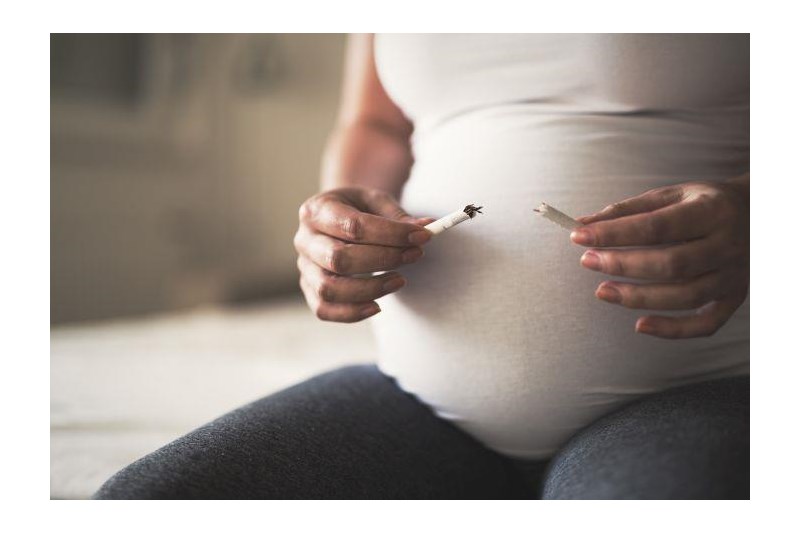Rates of smoking in pregnancy fall below 10 per cent
Published: 09/07/2021
New NHS data published this week shows that smoking in pregnancy fell to 9.5 per cent last year, the first time it has dropped below 10 per cent since records began. Smoking in pregnancy declined six times faster between 2019/20 and 2020/21 than the average for the previous four years. However, in order to reach the government’s target of six per cent or fewer pregnant smokers by 2022 the rate of decline needs to be even greater in the coming year, nearly four times faster again.
Smoking in pregnancy is the single biggest modifiable risk factor for miscarriages, stillbirths, premature birth and birth defects, causing heartbreak and irreparable damage to children and families.
The highest rates of smoking in pregnancy are in the poorest communities and in regions with the highest levels of deprivation. But the good news is that these are the regions where rates have fallen fastest, helping level up the health of the most deprived communities.
Some caution is needed when interpreting figures collected during the Covid-19 pandemic. However, it is clear that the fastest rates of decline in recent years have been seen in places in the north of England where there are comprehensive strategies to tackle smoking in the community, as well as intensive support for pregnant women.
Greater Manchester is a leading example. Smoking at time of delivery has fallen from 12.6 per cent in 2017/18 to 9.8 per cent in 2020/21, following the introduction of shopping vouchers to encourage pregnant women to seek help to quit. In the fourth quarter of last year smoking in pregnancy in Greater Manchester fell to 8.7 per cent, dropping below the national average of 8.9per cent for the first time. This is a stunning achievement, given that five years ago the rates of smoking in pregnancy in Greater Manchester were 17 per cent higher than the national average (12.9 per cent compared to national average of 11 per cent).
Sarah Price, chief officer of the Greater Manchester Health and Social Care Partnership, said, “The investment in Greater Manchester hasn’t just been in services to help pregnant women stop smoking, but also in tackling smoking across our most disadvantaged communities and reducing health inequalities.
“We know that parents-to-be are more likely to quit if they get the right support and everyone that meets eligibility criteria is also incentivised to stay smoke free with vouchers to help them prepare for the arrival of their new baby. This approach has proved successful with some of the most addicted smokers, by offering one more reason to quit.
"This is levelling-up in action and brings us closer to ‘making smoking history’ for Greater Manchester and for England. We must keep going with this vital work and deliver a smoke free start for every baby.”
| Trends in regional rates of Smoking at time of delivery (SATOD) since 2015/16 | |||||||||
| Region | 15/16 | 16/17 | 17/18 | 18/19 | 19/20 | 20/21 | Per cent point Decline from 15/16 - 19/20 | Per cent point Decline from 19/20 - 20/21 | Per cent point Decline needed to reach 6 per cent by 2022 |
| North | 14.6 per cent | 14.2 per cent | 14.2 per cent | 13.8 per cent | 13.3 per cent | 12.1 per cent | 1.3 | 1.2 | 6.1 |
| Midlands | 12.7 per cent | 12.4 per cent | 12.9 per cent | 12.8 per cent | 12.7 per cent | 11.3 per cent | 0.1 | 1.4 | 5.3 |
| East of England | 10.6 per cent | 9.8 per cent | 10.3 per cent | 9.7 per cent | 9.5 per cent | 9.2 per cent | 1.1 | 0.3 | 3.2 |
| London & the Southeast | 7.2 per cent | 7.1 per cent | 7.2 per cent | 7.0 per cent | 7.0 per cent | 6.5 per cent | 0.2 | 0.5 | 0.5 |
| Southwest | 11.4 per cent | 11.3 per cent | 10.9 per cent | 10.9 per cent | 11.0 per cent | 10.3 per cent | 0.4 | 0.7 | 4.3 |
| 11.0 per cent | 10.7 per cent | 10.8 per cent | 10.6 per cent | 10.4 per cent | 9.5 per cent | 0.6 | 0.9 | 3.5 | |
| Greater Manchester | 12.9 per cent | 12.5 per cent | 12.6 per cent | 11.7 per cent | 11.1 per cent | 9.8 per cent | 1.8 | 1.3 | 3.8 |
The government is set to publish a new ‘tobacco control plan’ later this year which will set out measures for achieving its ambition to make England smoke free by 2030. In a recent report, MPs from the All-Party Parliamentary Group on Smoking and Health urged the government to take bold action to deliver this ambition and made several recommendations to tackle maternal smoking. These include:
- A new target to reduce smoking in pregnancy rates to five per cent or less by 2025, on track to deliver a smoke free start for every child by 2030.
- Vouchers and stop smoking support for pregnant smokers to help them quit.
- Tougher rules to protect children and young people from becoming smokers, such as raising the age of sale for tobacco to 21.
- Targeted investment to provide quit support to smokers in communities where smoking does the most damage.
Author: N/A

.jpg?width=300&height=200&scale=canvas)









.jpg?width=150&height=100&scale=canvas)

